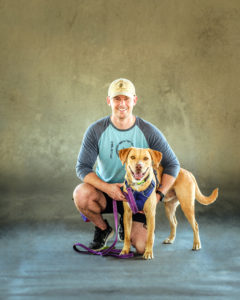A recent study suggests dogs are able to use Earth’s magnetic field to orient themselves.
A recent study suggests dogs are able to use Earth’s magnetic field to orient themselves. The ability, known as magnetoreception, allows other creatures, such as whales, dolphins, sea turtles and birds, to use this sixth sense for plotting a course for their annual migrations. It’s called homing behavior.
Homing, defined as the ability to return to a known location (breeding grounds, shelter sites, etc.) after displacement, has been exhibited in a diverse range of vertebrates that rely on a multitude of signals for navigating. These can include visual, scent, acoustic, celestial, magnetic and idiothetic cues. Idiothetic, or self-proposition, is used in navigation models for describing the use of self-motion cues, rather than allothetic, or external cues, which are forms of sensory information derived from the surrounding environment.
Up to this point, studies characterizing the navigational strategies of homing behavior in non-migratory species — particularly free-ranging mammals — have been scant. One of the earliest examples dates to 1920 when scientists attempted to decipher the mystery after using canine military couriers displaced while delivering messages during World War I.
Authors of the new study stated, “The magnetic field may provide dogs with a ‘universal’ reference frame, which is essential for long-distance navigation, and arguably, the most important component that is ‘missing’ from our current understanding of mammalian special behavior and cognition.”
To test their theories, researchers from Czechoslovakia and the U.S. utilized GPS and video cameras to study the navigational styles of 27 canines from 10 breeds. In total, 622 trials were conducted at 62 locations consisting of forested hunting grounds. Based on the records, they determined turning points, thus dividing the excursions into outbound and inbound tracks.
Undertaken between 2014 and 2017, they chose hunting breeds bred to locate prey in dense woodlands and thick brush and then find their way back to where they were released.
Researchers discovered that during two-thirds of the excursions, the dogs typically retraced their steps by using smell. But in a third of the expeditions, the dogs took a different route back. Of this group, most of them began by running for 65 feet along Earth’s north-south axis — even if the direction of their destination differed from this line. This prepping, or “compass run,” is thought to aid in determining where magnetic north and south lie and where the animal is in relation to those points. In other words, they needed to get their bearings before heading back.
“This run is instrumental for bringing the mental map into register with the magnetic compass and to establish the heading of the animal,” the authors wrote.
In 399 cases (59.4 %), dogs “homed” by following their initial outbound track (scenting or tracking strategy), and in 223 cases (33.2 %), dogs homed using a novel return route (scouting strategy). In 50 cases (8.0 %), it was determined dogs combined both strategies during a single return. It was ultimately revealed that scouting dogs were faster to return.
In other canine magnetoreception mysteries, after observing 37 breeds over a two-year period some 10 years ago, 12 Czech and German scientists came to the conclusion that dogs eliminate waste in alignment with the Earth’s magnetic field. They studied a total of 1,893 defecations and 5,582 urinations while recording the orientation of the animals’ spines with a compass to reach their conclusions. No explanation was given as to why they relieve themselves in a north-south direction, but scientists have known for years that several species spontaneously align with the Earth’s magnetic field when engaging in certain behaviors.
More research is expected to better understand our canine companions and how they navigate the world. QCBN
By Rebecca West, QCBN








